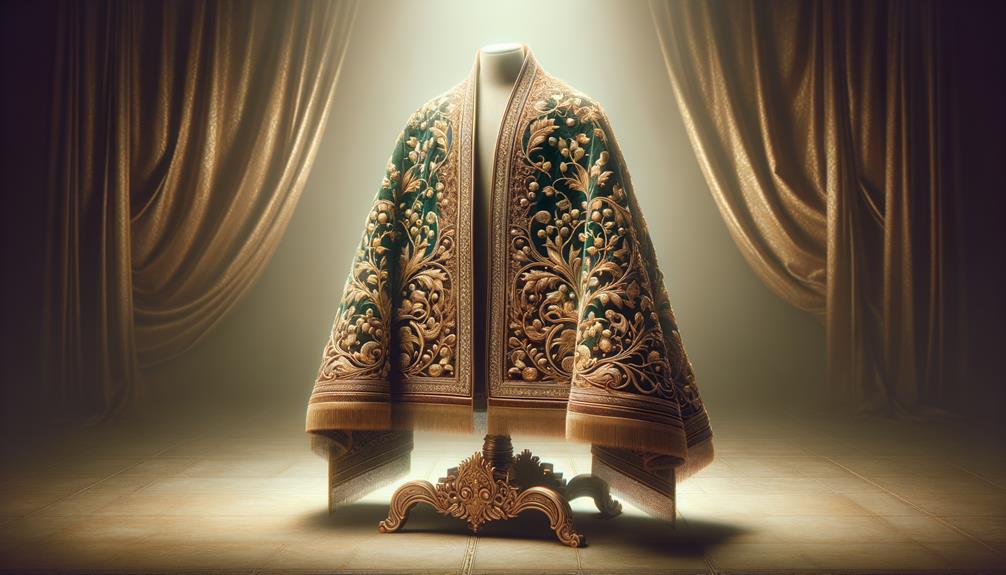As I stood before the Hirka-i Sharif, the sacred cloak of Prophet Muhammad, a deep sense of reverence washed over me. This relic, safeguarded by Owais Qarni's descendants in Istanbul, serves as a tangible connection to the divine. Commissioned by Sultan Abdulmecid in 1851, the cloak has drawn countless pilgrims, each seeking solace and healing. Whispers of its miraculous powers have echoed through time, captivating souls. Yet, one can't help but wonder – what is it about this cloak that continues to inspire such profound devotion?
Historical Significance
The Hirka-i Sharif, Prophet Muhammad's venerated cloak, embodies an enduring spiritual connection spanning centuries. Safeguarded by Owais Qarni's dedicated descendants, this sacred garment transcends mere fabric, symbolizing profound faith tied to the Prophet himself. Now housed in Istanbul's Fatih district mosque, it draws multitudes of pilgrims during Ramadan.
Though never meeting Muhammad physically, Owais Qarni shared a spiritual bond so profound it defied proximity. This bond bestowed upon his lineage the privilege of protecting the cloak. In 1611, they relocated to Istanbul to secure it from Sultan Ahmet I's claim. Centuries later, Sultan Abdulmecid recognized its significance, commissioning a mosque in 1851 specifically to enshrine it.
During Ramadan's public displays, visitors experience profound emotions and intimate closeness to the Prophet through the Hirka-i Sharif. This sacred relic stands as a testament to faith's enduring power, historical reverence, and an unbroken chain of devotion across generations.
Custodianship and Rituals
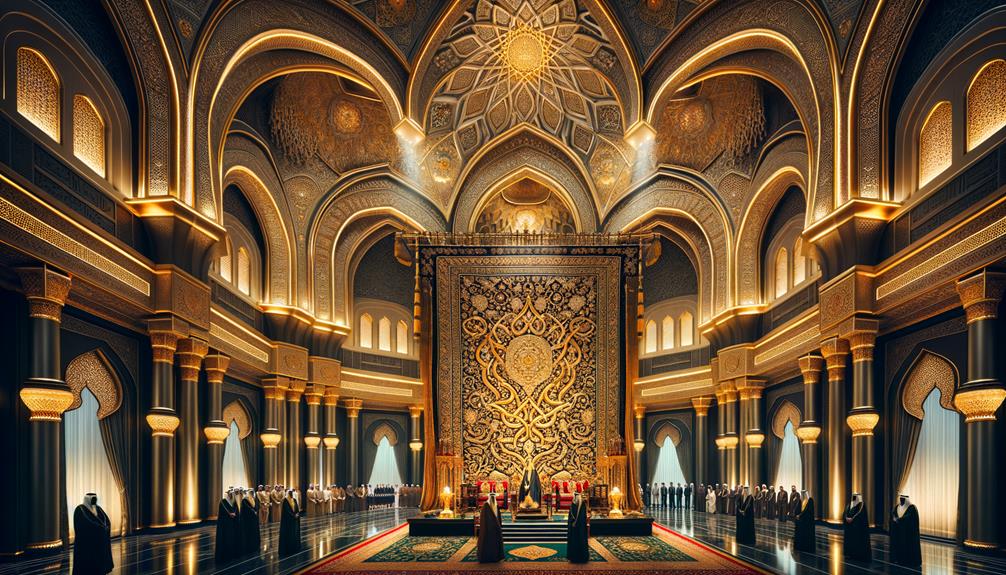
Custodianship of Prophet Muhammad's cloak holds profound cultural significance, with generations entrusted as protectors of this revered relic. A chosen family in Kandahar carries this responsibility, safeguarding the cloak within layers of silver boxes, secured by multiple locks. Their role transcends mere guardianship; it's a sacred duty.
Rituals surrounding the cloak are deeply rooted in Afghan traditions, performed with utmost reverence to honor the miraculous powers attributed to it. The shrine stands as a sanctuary, with stringent security measures ensuring the cloak's preservation.
During national crises or calamities, people seek the cloak's healing powers. Pilgrims journey to the shrine, their hearts burdened yet hopeful, seeking solace and divine intervention. Each ritual, each prayer reinforces the bond between the sacred relic and those who believe in its transformative influence.
Legends and Stories
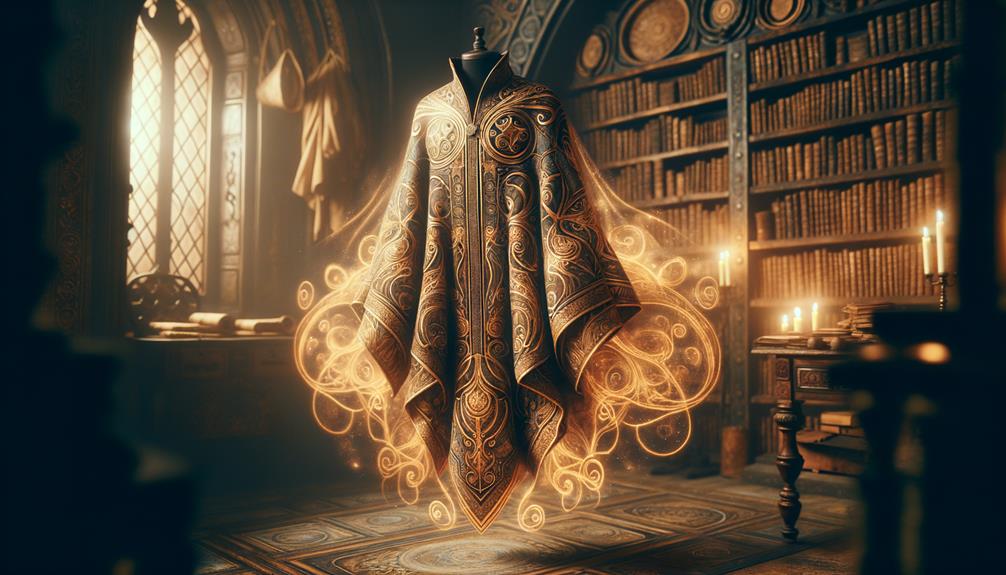
Sacred storytelling envelops the Khirka Sharif, Prophet Muhammad's cloak, with profound meaning across generations. Owais Qarni, a devoted companion who never met the Prophet, shared a spiritual connection so profound it defies explanation. His family has guarded the cloak since 1611.
In 1851, Sultan Abdulmecid constructed the H?rka-i Serif Mosque as a sanctuary for the cloak, attracting over a million pilgrims during Ramadan annually. These visitors witness more than a relic; they engage with legends passed through centuries.
Owais Qarni's mystical bond, the Sultan's preservation efforts, the family's custodianship, the emotive pilgrimages during Ramadan, and the cloak's significance in Sufi traditions – each story enriches our perception, making the Khirka Sharif a timeless symbol of devotion.
Miraculous Powers
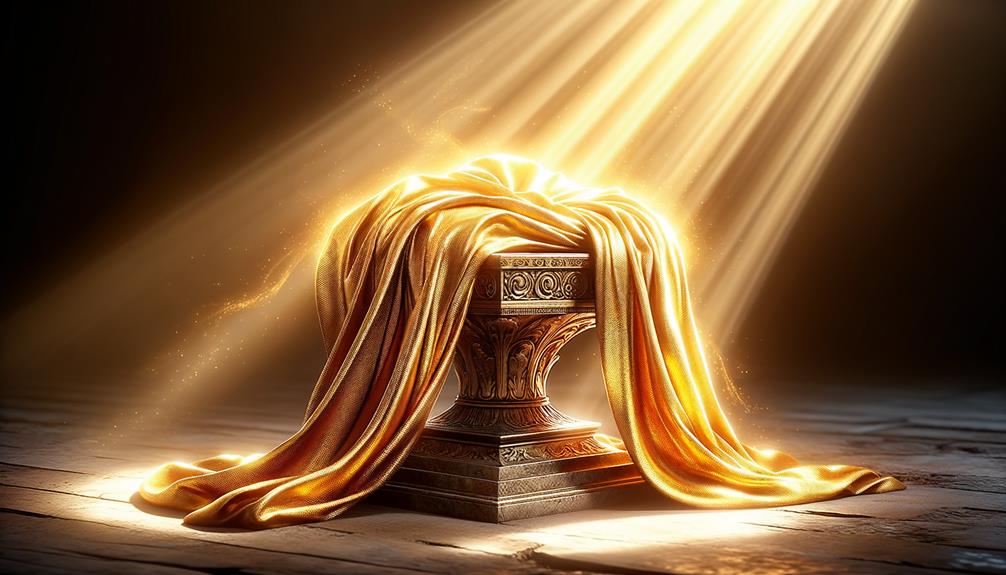
Many devotees believe Prophet Muhammad's cloak emanates extraordinary powers, offering divine protection and healing to those in need. In Islamic tradition, this sacred relic transcends its material form – it's a conduit for the Prophet's lasting blessings.
Stories circulate of times when the cloak averted disasters and bestowed favors upon the faithful. Those seeking solace at the shrine housing the cloak often report profound transformations, whether recovering from ailments or receiving safeguarding from harm. The cloak's association with spiritual healing provides comfort and respite.
Visitors arrive with hopeful hearts, praying for miracles. They feel a profound connection to Prophet Muhammad, drawing strength and courage through their faith in the cloak's extraordinary attributes.
This relic symbolizes the enduring belief in Prophet Muhammad's blessings. It continues inspiring and uplifting many, a source of hope and divine grace in challenging times.
Cultural Impact
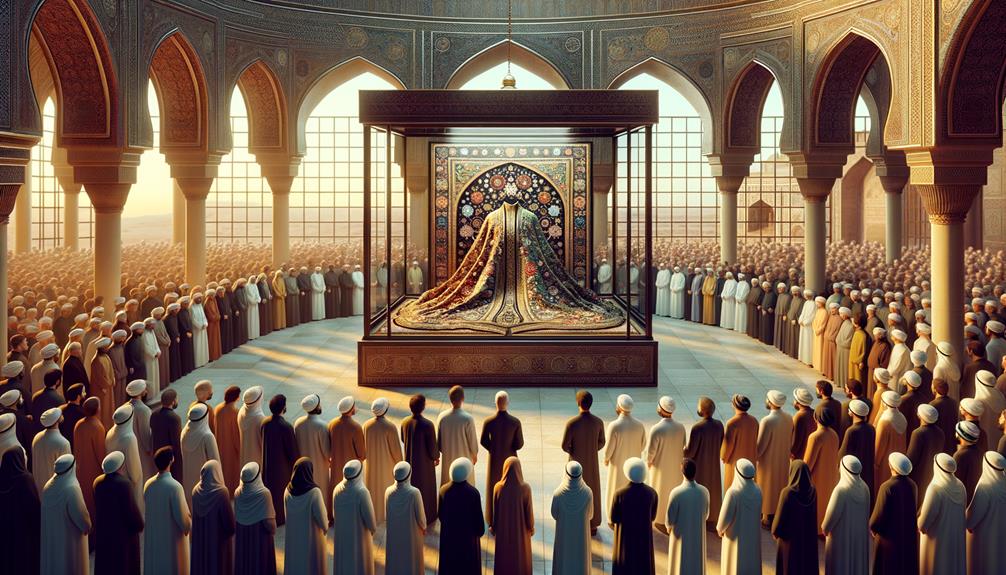
Every Ramadan, millions make the journey to Istanbul's Fatih district, drawn by the chance to experience the Hirka-i Sharif Mosque's sacred cloak of Prophet Muhammad. For over 13 centuries, this treasured relic has been guarded by the descendants of Owais Qarni, now unveiled for public viewing.
As the mosque's doors open, a wave of emotion washes over visitors. Tears flow freely, prayers echo through the halls, and palpable excitement fills the air. Witnessing the cloak transcends mere observation, stirring a profound connection to the Prophet's legacy and their heritage.
This annual pilgrimage isn't just a tradition; it's a spiritual quest to strengthen cultural and religious identity. Religious leaders underscore the cloak's immense significance through their sermons, amplifying its impact.
Despite temporary halts during the COVID-19 pandemic, the allure of the cloak endures. Journeying to witness this extraordinary artifact remains an indelible rite, solidifying its place in the hearts of the faithful across generations.
Frequently Asked Questions
Where Is the Footprint of Prophet Muhammad?
My search for ancient wisdom took me to Istanbul's Topkapi Palace Museum, where I stood before Prophet Muhammad's sacred footprint – a powerful artifact rich with spiritual meaning and historic gravity. Gazing upon this relic filled me with a profound sense of connection to the past.
Are There Any Relics of Prophet Muhammad?
Relics connected to Prophet Muhammad evoke a sense of awe, from his beard to sandals and letters. This exploration seeks to bridge the gap between our present and his profound impact.
The Prophet's physical mementos have attained an almost mythical status, yet their existence seems undeniable. Pursuing an understanding of these sacred artifacts offers a tangible link to a legacy that has shaped nations and cultures across centuries.
Where Is Prophet Muhammad's Hair Kept?
In the sacred Cloak Shrine in Kandahar, Afghanistan, a devoted family diligently safeguards a remarkable relic: strands of Prophet Muhammad's hair. Rituals and legends surround these precious strands, encased in nested boxes, embodying the divine heritage and profound spiritual significance of this revered object.
What Is the Cloth of Muhammad Saw?
While exploring the essence of faith, I uncovered the Hirka-i Sharif, Muhammad's sacred cloak. This treasured relic, cherished for centuries, embodies a profound spiritual bond, unveiling itself to the devoted during Ramadan. Its timeless aura resonates, unveiling truths beyond the ordinary world's boundaries. This sacred cloth stands as a testament to the enduring power of belief, transcending eras and speaking to the depths of the human soul.

